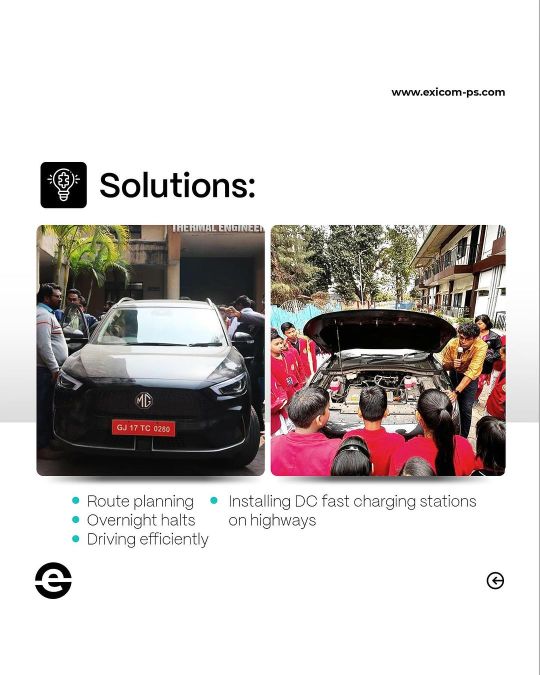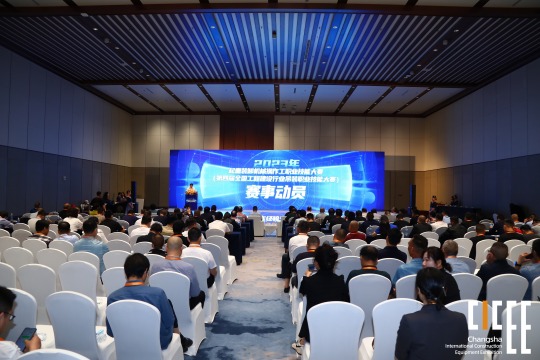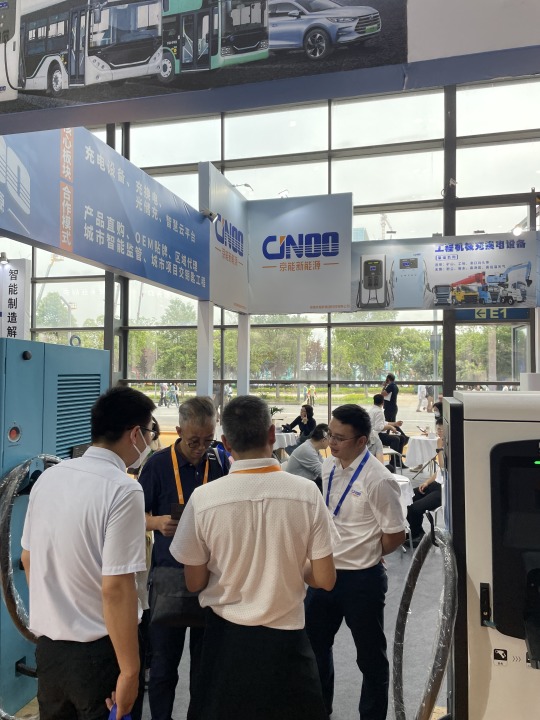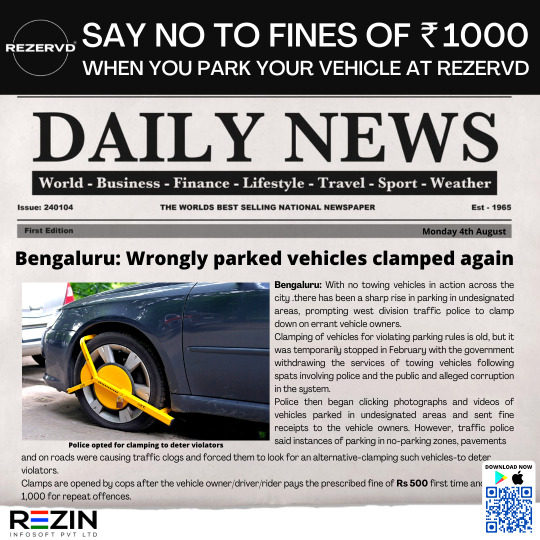#EVCharging
Text
Incorporating Renewable Energy into Your EV Charging Routine
The shift towards electric vehicles (EVs) has been a significant stride in the collective effort to reduce carbon emissions and combat climate change. As the electric vehicle market continues to grow, with global sales hitting over 6.6 million in 2021, a 108% increase from the previous year, the focus now turns to how we power these vehicles. Transitioning from fossil fuels to renewable energy sources for EV charging is the next critical step in ensuring that the benefits of EVs are fully realized. This article explores the ways in which individuals and communities can incorporate renewable energy into their EV charging routines.
Firstly, the concept of 'green charging'—the process of using renewable energy to charge electric vehicles—is not only environmentally sound but also increasingly economically viable. The cost of solar photovoltaic (PV) systems has dropped by about 90% since 2010, making it an accessible option for many. Homeowners with EVs can install solar panels to capture energy during the day, which can then be used to charge their vehicles in the evening. For those without the option to install solar panels, choosing a green energy provider for their home charging setup that sources electricity from renewables is an effective alternative.
In addition to solar power, wind energy is another potent source for EV charging. Wind energy has experienced a dramatic increase in its adoption, with the global wind power capacity reaching 837 GW in 2021, an increase of 93% from the capacity in 2016. EV owners can tap into this resource by purchasing wind energy credits or by selecting energy plans that prioritize wind-sourced electricity. This ensures that the energy used for charging their EVs comes from clean sources, even if they are not directly connected to a wind farm.
The integration of smart chargers has made it easier for EV owners to charge their vehicles when renewable energy production is at its peak. Smart chargers can be programmed to operate when renewable energy generation is high, which usually coincides with low demand periods such as mid-day for solar or night-time for wind. By doing so, EV owners ensure their vehicles are charged using the cleanest energy possible while also taking advantage of lower energy prices during these off-peak times.
Another key element in aligning EV charging with renewable energy is the development of a robust public charging infrastructure that is powered by renewables. Governments and private companies are investing in the installation of public EV charging stations that are directly connected to renewable energy sources. For instance, in California, which leads the US with over 39% of the country's EV sales, there is a plan to install 250,000 charging stations by 2025, many of which will be powered by renewables.
On a larger scale, energy storage systems play a vital role in matching renewable energy supply with EV charging demand. Energy storage solutions, like lithium-ion batteries or pumped hydro storage, can store excess renewable energy generated during peak production times. This stored energy can then be used to provide a consistent and reliable source of green electricity for EV charging, regardless of the time of day or weather conditions.
There is also a growing trend towards vehicle-to-grid (V2G) systems, where EVs do not just consume power but also have the capability to return energy to the grid. This technology allows for a dynamic energy exchange where EVs can be charged during renewable energy peak production and then supply energy back to the grid when it's needed the most. This not only ensures optimal use of renewable energy but also provides stability to the energy grid and potentially offers financial benefits to EV owners.
Finally, to truly capitalize on renewable energy for EV charging, there needs to be increased collaboration between policymakers, renewable energy providers, and the automotive industry. Incentives for residential and commercial solar installations, tax benefits for purchasing green energy, and subsidies for smart chargers are just a few of the ways that can accelerate the adoption of renewable-powered EV charging.
3 notes
·
View notes
Text
2 notes
·
View notes
Text
"Planet Ocean: tides are changing" 🌊🌊
As we celebrate World Oceans Day, we are reminded of the immense beauty and importance of our oceans. At CJNOO, we are committed to protecting our precious marine ecosystems by providing sustainable energy solutions. 🌍
Just as the tides shape our coastlines, our charging stations shape a cleaner future. With our state-of-the-art charging infrastructure, we contribute to reducing carbon emissions and preserving the health of our oceans. Together, let's make a splash in the world of renewable energy!
Join us in our mission to protect and conserve our oceans. Together, we can create a harmonious balance between sustainable energy and marine preservation.
contact us: +4407355 276591
web: cjnoo.en.alibaba.com
#worldoceansday#ev#ev charger#ev adoption#ev charging companies#ev charging infrastructure#ev charging solutions#ev charging station#evcharging#sustainable#sustainability
3 notes
·
View notes
Link
EV charging is becoming increasingly crucial for EV businesses. EV Mobile app development can help owners monitor the charge level of their EV vehicle, control charging sessions, and even manage to charge station deposits.
6 notes
·
View notes
Text

#REZERVD PARKING SPACE.#FACEBOOK:https://facebook.com/REZERVD1/?ref=pages_you_manage#INSTAGRAM:https://instagram.com/rezervd_parking/#parking#digitalparking#carparking#cars#bikes#koramangala#parkinglot#parkhere#bangloreparking#bengaluruparking#rezervdparking#rezervd#rezininfosoft#evcharging#bengalurutraffic
4 notes
·
View notes
Photo

Man charging an electric AMC Gremlin. Seattle, USA, 1973. www.CDLhunter.com #electricvehicle #evcharging #evcharger #electricsemi #electricsemitruck #electricsemitrucks #trucker #rollingcoal #dieselnation #iceroadtruckers #truckingindustry #amcgremlin #amcgremlinx #amc #dieselpower #cdldriver #dieselporn #roadhog #cdlhunter #cdllife #cdljob #cdljobs 🚛 Follow @cdlhunter 📲 Call or text us at (347) 878-2591 for a driving job (at CDL Hunter) https://www.instagram.com/p/CgHn4-3LxxU/?igshid=NGJjMDIxMWI=
#electricvehicle#evcharging#evcharger#electricsemi#electricsemitruck#electricsemitrucks#trucker#rollingcoal#dieselnation#iceroadtruckers#truckingindustry#amcgremlin#amcgremlinx#amc#dieselpower#cdldriver#dieselporn#roadhog#cdlhunter#cdllife#cdljob#cdljobs
5 notes
·
View notes
Photo

Fastned Charging Station, Charlton
2 notes
·
View notes
Text
Merlin Ventana: Luxury Living Redefined in Baner, Pune
Embrace unparalleled luxury at Merlin Ventana, a new launch by the esteemed Merlin Group. Located in the prime location of Baner, Pune, this residential project offers stunning 3 & 4 BHK apartments designed to redefine luxury living.
Unmatched Luxury: Experience meticulously crafted residences with opulent features and double-height, air-conditioned lobbies that exude sophistication.
Seamless Convenience: Enjoy excellent connectivity to various locations in Pune, including Balewadi Highstreet, Hinjawadi, Wakad, Aundh, and more.
Investment Potential: Invest in a property with the potential for high returns, thanks to the project's location and the Merlin Group's reputation.
Modern Amenities: Indulge in a plethora of over 40 amenities that cater to your every lifestyle need, including a gym, meditation area, and EV charging.
Trusted Developer: Backed by the legacy of Merlin Group, renowned for their commitment to quality and innovation.
Property Type: Residential Project
Unit Variants: 3 & 4 BHK Luxury Apartments
Status: New Launch
Possession: December 2028
Prices: Starting from ₹1.47 Cr* (onwards)pen_spark
#MerlinVentana#PuneRealEstate#LuxuryLiving#BanerPune#NewLaunch#ApartmentLiving#InvestInPune#3BHK#4BHK#DoubleHeightLobbies#ModernAmenities#EVCharging#SecurityLiving#CommunityLiving
0 notes
Text

Post: FLO is improving EV charging infrastructure | TechCrunch https://www.blaqsbi.com/5PsY
0 notes
Text

𝐄𝐥𝐞𝐜𝐭𝐫𝐢𝐜 𝐕𝐞𝐡𝐢𝐜𝐥𝐞 (𝐄𝐕) 𝐂𝐡𝐚𝐫𝐠𝐢𝐧𝐠 𝐌𝐚𝐫𝐤𝐞𝐭 𝐔𝐥𝐭𝐢𝐦𝐚𝐭𝐞 𝐆𝐮𝐢𝐝𝐞
𝑮𝒆𝒕 𝒂 𝒇𝒓𝒆𝒆 𝒔𝒂𝒎𝒑𝒍𝒆 𝑷𝑫𝑭 @ https://www.nextmsc.com/electric-vehicle-charging-market/request-sample?utm_source=debashree_linkedin&utm_medium=debashree_ip&utm_campaign=debashree_ev_charging&utm_id=debashree_apr&utm_term=debashree_ip&utm_content=debashree_ip
The 𝐄𝐥𝐞𝐜𝐭𝐫𝐢𝐜 𝐕𝐞𝐡𝐢𝐜𝐥𝐞 (𝐄𝐕) 𝐂𝐡𝐚𝐫𝐠𝐢𝐧𝐠 𝐌𝐚𝐫𝐤𝐞𝐭 is poised for remarkable growth to a staggering 𝐔𝐒𝐃 𝟏𝟐𝟖.𝟏𝟑 𝐛𝐢𝐥𝐥𝐢𝐨𝐧 by 2030. This remarkable trajectory represents a robust 𝐂𝐀𝐆𝐑 𝐨𝐟 𝟐𝟖.𝟐%by 2030.
The surge in demand for charging infrastructure mirrors the widespread acceptance and increasing utilization of electric vehicles globally. Governments around the world are stepping up efforts to incentivize the adoption of electric vehicles, driven by the urgent need to meet fuel consumption limits and curb greenhouse gas emissions.
One of the key challenges in this burgeoning market is the need for standardization of EV charging stations. As the EV market expands, ensuring uniformity in charging infrastructure becomes paramount, especially considering the diverse charging loads and requirements. Standardization efforts will not only streamline operations but also enhance interoperability, fostering a more seamless experience for EV owners.
Access full report @ https://www.nextmsc.com/report/electric-vehicle-charging-market?utm_source=debashree_linkedin&utm_medium=debashree_ip&utm_campaign=debashree_ev_charging&utm_id=debashree_apr&utm_term=debashree_ip&utm_content=debashree_ip
0 notes
Text
EV Charging on the Go: Tips for Long Journeys
Embarking on a long journey with an electric vehicle (EV) requires more than a full charge and a sense of adventure—it demands meticulous planning and a keen understanding of EV charging logistics. For many, the thought of long-distance travel in an EV is daunting, but with the right preparation, it can be as smooth as any trip taken in a gasoline-powered vehicle. Let’s explore the best practices for EV charging when you're on the move.
Pre-Travel Planning
Before setting out, a well-planned route is your best tool. Utilize apps and websites that specialize in EV travel, such as PlugShare or A Better Routeplanner, to map out your trip. These services provide real-time data on charger locations and types, availability, and may even offer insights into your expected energy consumption based on your vehicle’s model and driving conditions. Statistics suggest that preemptive planning can reduce charging time by as much as 40%, turning potential hours at charging stations into mere minutes.
Understanding Charger Types
Knowing the differences between Level 1, Level 2, and DC Fast Chargers (DCFC) is crucial. Level 1 chargers are your standard household outlets and are impractical for long journeys due to their slow charging speeds. Level 2 chargers offer a faster charging rate, typically adding about 20 to 30 miles of range per hour of charging. However, for the quickest boost, seek out DCFC stations that can charge compatible EVs up to 80% in around 30 minutes. Keep in mind, the availability of DCFC stations can vary widely by region.
Charging Etiquette and Timing
Charge station etiquette is essential. Always check the station's status before plugging in and adhere to any time limits. Peak times can often lead to longer waits, so consider charging during off-peak hours if possible. A recent survey indicated that charging stations are least occupied mid-week and late at night. By avoiding peak times, you not only save time but may also benefit from lower charging rates offered by some networks.
Battery Management
Battery health is paramount for efficient charging. Aim to keep your battery between 20% and 80% charged—this is the sweet spot for lithium-ion batteries found in most EVs. Charging beyond 80% often significantly slows down as the battery management system works to protect battery health. Also, avoid depleting your battery below 20% to maintain its longevity and ensure you have enough charge to reach the next station if one is unexpectedly out of service.
Membership and Payment
Various charging networks have different payment structures and membership options. Some offer discounted rates for members, while others may require a subscription for access. Signing up for memberships ahead of time can not only save money but also reduce the time spent at the charger, as members often enjoy shorter authorization times before charging begins.
Vehicle Preparation
Optimize your vehicle's condition before heading out. Tires should be properly inflated to reduce rolling resistance, and excess weight should be removed to increase efficiency. According to the U.S. Department of Energy, for every 100 pounds of excess weight carried, your vehicle's efficiency can drop by 1%. Furthermore, use your EV’s eco mode, if available, to extend your range by moderating the vehicle's energy use.
Emergency Planning
Even with thorough planning, always prepare for the unexpected. Keep a portable charger on hand for emergency situations, and know the location of Level 1 outlets along your route as a last resort. Maintaining a list of contact numbers for roadside assistance that caters to EVs can be a lifesaver in unforeseen circumstances.
Travelling long distances in an EV doesn't have to be a source of anxiety. With the rapidly expanding infrastructure and increasingly efficient technology, EV charging on the go is becoming more user-friendly. By following these tips, planning effectively, and staying informed, your electric road trip can be as enjoyable as it is eco-friendly.
5 notes
·
View notes
Text
Have you ever felt range anxiety on an electric car road trip?
Mr. Sushil Reddy conquered 8,000+ km in an EV!⚡️Of course he faced the challenges. See how he overcame them (and his charging anxiety!)




🔗 Sushil Reddy on the road, distance covered 8,000+ km.
————————
For more info about EV Charging innovation, energy storage, and sustainable mobility 👇
Visit & follow Exicom Group | Instagram
0 notes
Text






The 3rd Changsha International Construction Machinery Exhibition (CICEE for short) was conducted at Changsha International Convention and Exhibition Centre from May 12th to 15th, 2023. After the world's three major construction machinery exhibits, such as Bauma in Germany, the Construction Machinery Exhibition in the United States, and the Construction Machinery Exhibition in France, CICEE is the largest construction machinery exhibition in Asia.
Jingneng New Energy (CJNOO) has made a strong presence with a variety of DC charging heaps and super charging piles as the firm with the greatest shipments of domestic construction machinery charging piles for two consecutive years! Simultaneously, Sun Maojian, President of Strategic Development of CJNOO, was invited to attend the show and delivered a speech titled "Development Trend of New Energy Construction Machinery" and the keynote speech "Supercharged Future."
Contact us: +4407355276591
web: cjnoo.en.alibaba.com
en.evcpoo.com
#evcharging#ev charger#ev#ev adoption#ev charging infrastructure#ev charging solutions#ev charging companies#ev charging station
2 notes
·
View notes
Text
🔌⚡ Attention EV Enthusiasts! ⚡🔌
Are you tired of the hassle of managing your electric vehicle (EV) charging stations? Say goodbye to the chaos and hello to seamless charging with our cutting-edge EV Charging Management Platform! 🌟
🚗 Drive Efficiency: Streamline your EV charging operations effortlessly, saving time and resources.
🌐 Remote Management: Monitor and control charging stations from anywhere, ensuring optimal performance round the clock.
📈 Maximize ROI: Unlock insights into usage patterns, energy consumption, and more, empowering you to make data-driven decisions and maximize returns.
Whether you're a business, municipality, or EV enthusiast, our platform is tailored to meet your needs and elevate your charging experience to the next level! Don't miss out on the future of EV charging—join us today! 💡
Plug into the future with our EV Charging Management Platform! 🔌💡
Learn More : https://iris.steam-a.com/
0 notes
Text

#parking#digitalparking#carparking#bikeparking#digital#cars#bikes#koramangala#forummalkoramanagala#parkinglot#smartparking#parkhere#bangloreparking#bengaluruparking#rezervdparking#rezervd#rezininfosoft#evcharging#memes#drake#delhitraffic#bangaloretraffic#REZERVD APP : https://play.google.com/store/apps/details…#🌐WEBSITE : http://rezin.in/
2 notes
·
View notes
Link
In the ever-evolving electric vehicle (EV) market, choosing the perfect car can be a daunting task. Tata Motors, a leading Indian automaker, offers two compelling options – the Tata Punch EV and the Tata Tigor EV. Both EVs boast impressive features and competitive pricing, making it difficult to decide which one suits your needs best. This comprehensive comparison between the Tata Punch EV Empowered Plus S Medium Range (MR) and the Tata Tigor EV XZ Plus Lux will shed light on their key specifications, features, and unique selling points, empowering you to make an informed decision. Sizing Up the Contenders: Dimensions and Space Tata Punch EV: With a length of 3857 mm, width of 1742 mm, and height of 1633 mm, the Punch EV falls under the compact SUV category. This translates to a slightly smaller footprint compared to the Tigor EV. However, its boxy design offers a more spacious feel on the inside. The Punch EV boasts a best-in-class boot space of 366 liters, with an additional 14 liters of frunk storage, making it ideal for weekend getaways or carrying luggage for a small family. Tata Punch EV Empowered Tata Tigor EV: The Tigor EV, classified as a compact sedan, measures 3993 mm in length, 1677 mm in width, and 1532 mm in height. While it offers a slightly larger overall footprint than the Punch EV, its lower height might translate to less headroom for taller passengers. The Tigor EV provides a boot space of 316 liters, which is sufficient for most everyday needs. In a nutshell: The Punch EV offers a more spacious interior and invulnerable cargo capacity with its SUV design and additional frunk storage, while the Tigor EV provides a slightly larger overall footprint. Under the Hood: Powertrains and Performance Battery and Range: Both the Punch EV MR and Tigor EV come equipped with similarly sized Lithium-ion battery packs, offering a claimed driving range of up to 315 km (according to ARAI for Tigor EV and MIDC for Punch EV). This range is suitable for daily commutes and even occasional weekend trips within a moderate distance. Power and Torque: While the battery packs are similar, the Punch EV emerges victorious in terms of power output. It boasts an electric motor that delivers 82 PS of power and 114 Nm of torque. The Tigor EV, on the other hand, offers 75 PS of power and a higher torque output of 170 Nm. This translates to a potentially zippier acceleration for the Punch EV, while the Tigor EV's higher torque might provide a stronger pulling power. In a nutshell: The Punch EV offers a slight edge in terms of power output, suggesting potentially better acceleration, while the Tigor EV boasts a higher torque figure, which could translate to a stronger pulling power. Both EVs offer a comparable driving range. Charging Options: Filling Up Your EV Both the Tata Punch EV MR and Tata Tigor EV offer similar charging options: 50 kW DC Fast Charger: Using a public 50 kW DC fast charger, both EVs can be juiced up from 10% to 80% battery capacity in around an hour, making them suitable for long journeys with readily available charging stations. Home Wall Box AC Charger: For convenient home charging, both EVs can be plugged into a 7.2 kW AC wall box charger, although the exact charging time is not specified for the Punch EV in the provided information. However, both EVs are expected to take approximately 9.4 hours for a full charge from 10% to 100% using a home AC charger. In a nutshell: Both EVs offer convenient charging options with DC fast charging and AC home charging capabilities. Feature Face-Off: Comfort, Convenience, and Technology Here's a breakdown of the key features offered by each EV: Tata Punch EV Empowered Plus S MR Exterior: The Punch EV boasts a sportier look with auto-LED projector headlights with LED DRLs, welcome and goodbye animation with DRLs, sequential turn indicators, and 16-inch alloy wheels. Comfort & Convenience: The Punch EV provides automatic climate control, a cooled glovebox, ventilated front seats, multimode regenerative braking, paddle shifters for braking regen modes, drive modes (City & Sport), cruise control, push-button start/stop, electrically adjustable ORVMs with auto-folding function, auto-dimming IRVM, and USB Type-C fast charging ports. Safety: The Punch EV prioritizes safety with 6 airbags, a 360-degree camera with blind view monitor, electronic stability control, hill hold assist, ABS with EBD, tire pressure monitoring system, ISOFIX child seat anchorage, rear parking sensors, rain-sensing wipers, and a rear wiper with auto defogger. Tata Tigor EV XZ Plus Lux Exterior: The Tigor EV offers a more elegant sedan design with auto-halogen projector headlights with LED DRLs, and 14-inch steel wheels with styled covers. Interior: Similar to the Punch EV, the Tigor EV features leatherette seat upholstery, a leather-wrapped steering wheel, a cooled glovebox, multimode regenerative braking, drive modes (City & Sport), steering-mounted controls, cruise control, push-button start/stop, electrically adjustable ORVMs with auto-folding function, a semi-digital driver's display, and a 7-inch touchscreen infotainment system with wired Android Auto & Apple CarPlay. Comfort & Convenience: The Tigor EV offers automatic climate control, height-adjustable driver's seat, multimode regenerative braking, drive modes (City & Sport), steering-mounted controls, cruise control, push-button start/stop, electrically adjustable ORVMs, day/night IRVM, and USB charging ports. Safety: The Tigor EV prioritizes safety with dual front airbags, ABS with EBD, tire pressure monitoring system, rear parking camera, rear parking sensors, ISOFIX child seat anchorage, rain-sensing wipers, and a rear wiper with washer and defogger. In a nutshell: The Punch EV boasts a more feature-rich package with a sunroof, air purifier, larger touchscreen infotainment system, wireless phone charger, ambient lighting, a digital driver's display, and a 360-degree camera with blind view monitor. The Tigor EV offers a simpler feature set but still provides essential comfort and convenience features. The Verdict: Choosing Your Perfect EV Both the Tata Punch EV Empowered Plus S MR and the Tata Tigor EV XZ Plus Lux are compelling options in the electric vehicle segment. Here's a quick recap to help you decide which EV aligns best with your needs: Choose the Tata Punch EV if: You prefer a compact SUV design with more cargo space and headroom. You prioritize a sportier look and a feature-rich cabin with a sunroof, air purifier, larger touchscreen infotainment system, wireless phone charger, ambient lighting, and a digital driver's display. You value a 360-degree camera with a blind view monitor for enhanced safety.
#carbuyingguide#compactsedan#compactSUV#electriccar#electricvehicles#EVcharging#EVcomparison#EVfeatures#EVrange#TataMotors#tatapunchev#TataPunchEVEmpowered#tatatigorev
0 notes